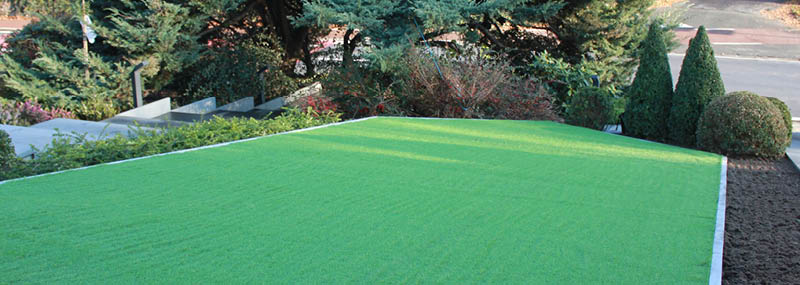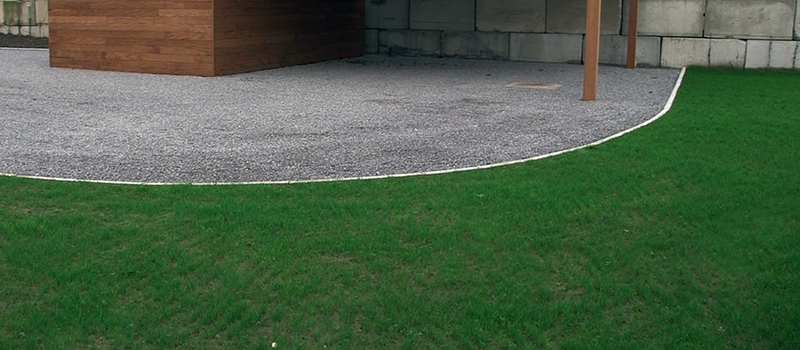How To Lay Fake Grass?
Fake Grass, Artificial grass, whatever you may call it isn’t always simple to install, but can be done as a DIY project with some know how. So if you ever asked yourself ‘How to lay artificial Grass?’ we hope to give you some pointers in this blog.
What Do You Put Under Artificial Grass?
To perfectly lay your artificial grass onto an existing hard base such as concrete or tarmac, we recommend installing a layer of underlay or Eccodal 40 or 50 Grass Grid beneath the artificial grass. Before you lay the foam pad down, be sure to clean the surface beneath it. You can also use the popular Grass Grids or Drainbases. These Grids or Drainbases catches the trickling rainwater, buffers it under the tile after which the water then starts to infiltrate into the ground. This considerably increases the durability of your artificial grass.

Before you begin
- Check for any water ponding
- Does your garden have adequate draining?
- Remove any weeds or plants that you no longer want in your garden
- Check that access points (back doors, gates etc.) to your garden are clear
To keep things simple for our DIY people, you can lay artificial grass by using the required tools and by following our 6 easy steps below:
1.
Plan & clear the area- Check for proper drainage & clean the area properly.
2. Create an edge -Timber Edging, Plastic Edging, Treated Sleepers, Steel Edging, Paving or Concrete Gravel Boards
3. Apply weed membrane
4.
Lay the base- Put down your desired base it be underlay or drainbases.
5.
Lay the artificial grass and trim edges
5a. Roll out your grass onto the levelled area allowing 5cm of extra grass on all sides. This will give you enough material to make sure a perfect edge. Leaving your grass to settle for 2–3 hours will help remove any creases.
5b. Trim your grass carefully using a sharp knife to give it a smooth and neat finish. We recommend that you turn the grass over and run your knife neatly next to the stitch lines avoiding cutting into the stitches. You can use carpet tacks to secure the grass to a wooden surface or decking or an adhesive suitable for outdoor use on a concrete surface.
5c. For large areas you may have to join two pieces of grass. For this you need to buy joining tape and adhesive
6.
Add finishing touches - Enjoy your new grassed area.

In the days after fitting
- Regular brushing of your grass with a broom or plastic leaf rake will help to keep the fibres straight and even.
- Leaves and other dirt can be removed with a broom, leaf rake or leaf blower.
- Spillages can be washed away with water. Dog or cat faeces can be left to harden and then be removed. A diluted disinfectant can be used to wash away any residue.
- Avoid sharp objects and spread the load of garden furniture, trampolines or outdoor play equipment to minimise indentations.
- Make sure that barbeques or other hot objects do not come into contact with your fake grass.